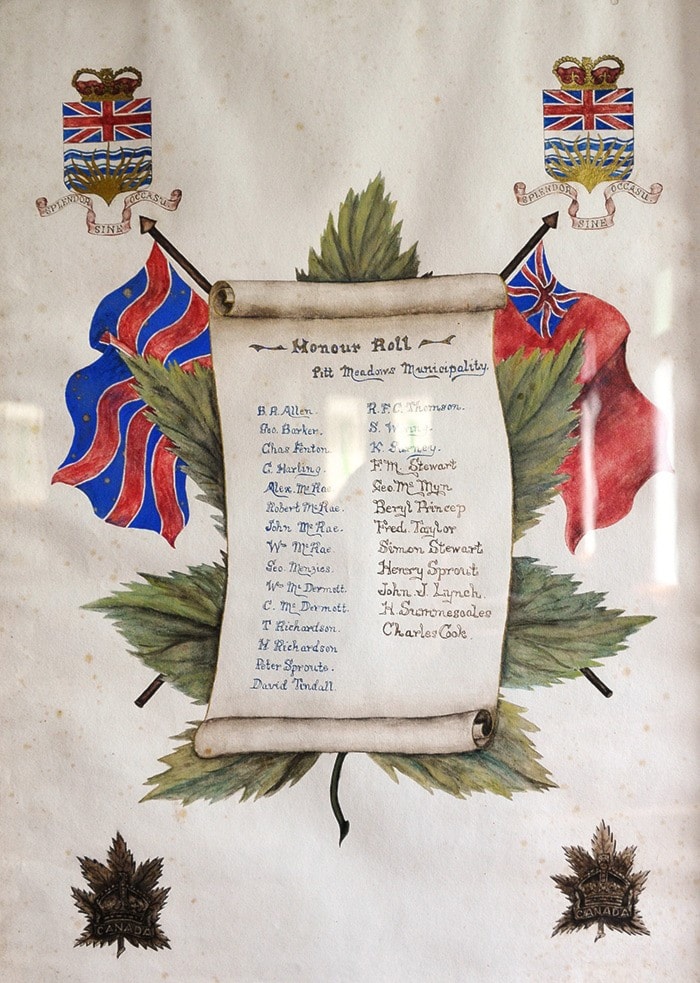Earlier this week, many of us were at our local cenotaphs, remembering those who gave their lives for their country and for their community in two World Wars.
But what of the names of the living who served from the community and are not on the cenotaph, where can they be found?
At the corner of Harris and Ford roads is what many think of as the “little white church building.”
At the outset of the First World War, it was four years old and was a Seventh Day Adventist Church, serving the colony located in the Hoffmann Park area off what is now Advent Road.
In 1922, with the Adventists mostly gone from the area, the building was purchased by the Community Church Society and it remains in its possession to this day.
As a church with such connections to the community, what better place to have documentation of the individuals who signed up and went to war but who were lucky enough to return home and, therefore, did not earn a place on their local cenotaph.
The documentation – two beautifully hand-rendered Rolls of Honour, listing the names of those men and women from Pitt Meadows who served in each of the world wars.
The first roll, 1914 to 1918, was made by Belle Menzies.
The second roll, 1939 to 1945, was made by Earl Irvine.
In 1914, in the newly formed municipality of Pitt Meadows, there was a population of less than 250, which did not increase by war’s end in 1918.
Despite the small population, 27 area men enlisted and served with the Canadian Overseas Expeditionary Force. Of them, 26 returned to Canada, leaving only one name, Roland Thomson, on our cenotaph.
Of those who enlisted, four of them were brothers – John, Alexander, Robert and William McRae, and they are all listed despite having only arrived in the community shortly before the war and not returning to the area after the hostilities ended, leaving us with little information about them.
From their attestation papers, we know they hailed from the area of Inverness, Scotland, and that they shared brown hair and eye colour. The eldest, John, was of “fresh” complexion, while his bothers, Alexander and Robert, were dark.
None of them were particularly tall, topping out at 5’8”. They were all in their 20s. Three of them were not married, and two of them listed their mother, who was also a recent arrival in Pitt Meadows, as their next of kin.
Alexander and Robert signed up together in Vancouver in November 1914, and John followed in Vernon in June 1915.
We are not sure about William, but think he enlisted in November 1915 in New Westminster.
Death certificates found for two of the bothers tell us how they lived out their lives. Alexander passed away in 1988 at the age of 95, having married, then widowed. His occupation was listed as “fisherman.”
His older brother John passed away in 1971 at the age of 86. He, too, had eventually married and worked as a warehouseman at a brewery. At the time of his death he had lived in Canada for 61 years and in this province for 57.
Of their time in the province, he and his brothers spent a very short part of it in Pitt Meadows, but long enough to be remembered.
Leslie Norman is the curator of Pitt Meadows Museum.
